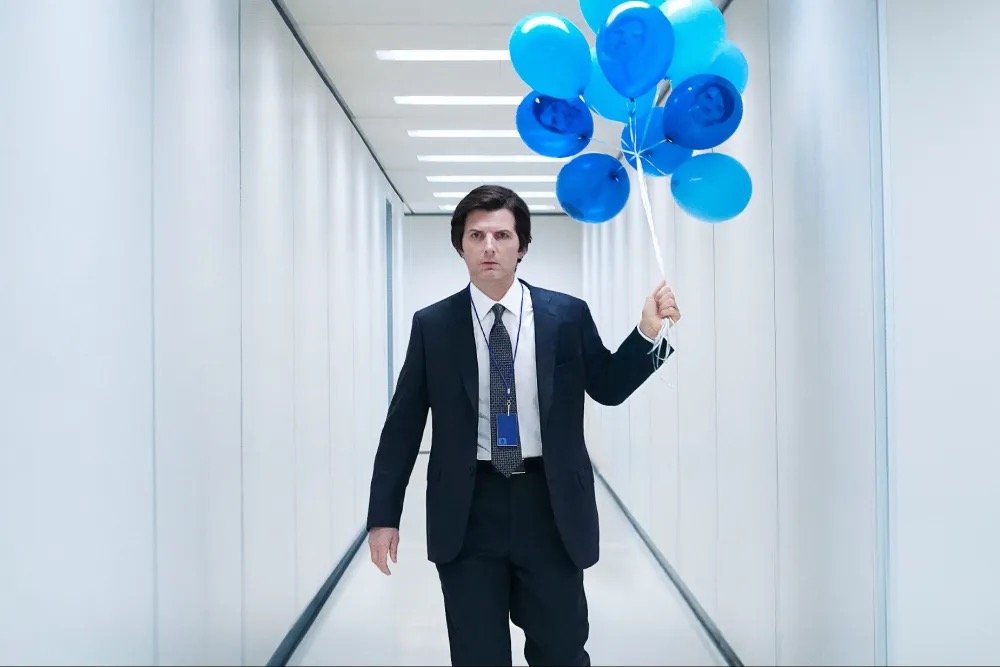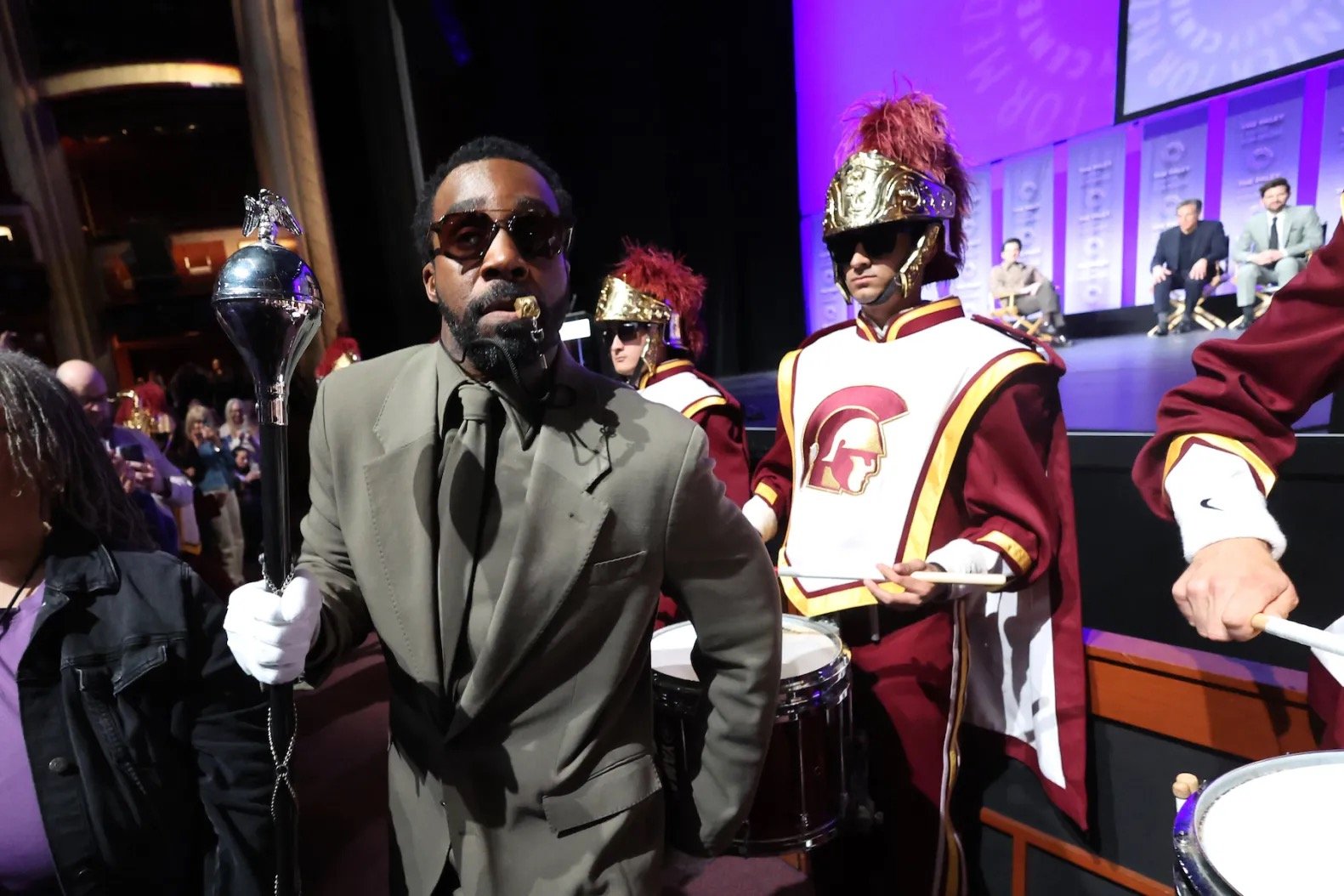The Marketing of Severance: How Apple Turned the Little Known Sci-work Workplace Drama into a Global Phenomenon.
Written by Raina Pawloski
Innies. Outies. ORTBO. Kier. MDR. OTC. If you haven't been keeping up with Severance, an Apple TV mystery-drama starring Adam Scott and Britt Lower, these words probably mean nothing to you. And before January, you wouldn't have been the only one confused.
Severance released its first season in February of 2022. It garnered a small cult following of super fans but made no real noise in awards season or on the internet. The release of season two, however, exploded the show in popularity. New fans binged season one to catch up to season two's weekly releases, and as a result, season one was streamed more in the first six weeks of this year than in its first 12 weeks of release back in 2022, with 22.4 million hours streamed vs. 18.4 million, respectively, according to Variety. It seems like now, everyone in your life is either talking about severance or complaining that their friends are begging them to watch it. And you had to be quick with it too - if you didn’t watch the new episodes right as they were released, you were sure to be flooded with spoilers on social media.
What’s this show about anyway?
Severance takes the idea of wanting to escape your boring office job to another level. In this world, a procedure allows you to separate your work and home life, creating two different versions of yourself: the innie, who only experiences the life of Lumon, and the outie, who doesn’t carry any memories of their 9-5 home with them. No one is quite sure what Lumon actually does — other than serve Kier, the god-like founder the whole town seems to either know about or worship.
The show combines simple office comedy between bright-eyed just-born-yesterday coworkers with mind-boggling mysteries surrounding the corrupt doings of a corporate oligarchy. And for love triangle fans out there - tune in. With multiple consciousnesses living in the same body, love and relationships with innies and outies can (and do) get pretty messy.
This show poses an influx of ethical questions about autonomy, capitalism, and love. With Severance, the unsaid is just as important as the said, and the amount of breadcrumbs and easter eggs in each episode has been enough to keep Reddit busy with theories for over a month after its season finale.
Why the sudden popularity?
So, if the show is so great, why is everyone just paying attention now? Well, it has a lot to do with the unique marketing.
On January 14th, the severance team set up a live pop up event in Grand Central Station. Apple TV’s marketing team brought the set from our TV screens to NYC, placing the iconic four-way MDR desks and characters within a glass box in the busy train station. Scott, Lower, Zach Cherry, Tramell Tilman, and Patricia Arquette all gave award-winning performances just with their body language (no one outside the box could hear what they were saying). The actors stayed in character and did live improv work the whole time, with Scott even joking “None of us peed for three hours” in an interview with Stephen Colbert on The Late Show.
This event was how I, and many fans, first discovered the show. Scrolling on Twitter, I couldn’t help but be intrigued by the concept. Actors improvising for hours? In a little glass box? With Ben Stiller filming them like a proud dad? This is a show that has a team that loves and cares about it. That wants to put in the work to make it known.
There were many other live events during the peak of the show's popularity. A live showing of the season two finale in LA had Tilman, the actor portraying MDR supervisor Mr. Milchock, performing live with the marching band introduced in the same episode. The audience got a live show of the Choreography and Merriment Department that shocked viewers on the first watch (iykyk).
The cast and crew recently also did a pop-up event at the real-life Lumon on April 5th and 6th. Bell Works, a functioning office building in Holmdel, NJ, teased a “mysterious and important event” on their Instagram with cryptic photos of drinks named after the characters and the iconic MDR green carpet. A live panel featuring the creative and acting team was moderated by Colbert, and other fun Lumon-themed activities and performances were enjoyed by those in attendance.
And more than in-person pop-ups, Apple TV has also been providing in-universe material for fans to enjoy as well. The first few chapters of The You You Are, a fictional book that plays a major part in the first season of the show, are available on Apple Books, narrated by the in-universe author Richen Hale and actor Michael Chernus. Tilman and his co-star Sarah Bock have also been making Managerial Promotional videos, similar to ones you'd see in a real-life work environment, posted on the real Lumon Linken page. Have you ever wanted to try macro data refining yourself? You can, at lumon-industries.com While the numbers won’t be scary, it sure will feel like you are sitting at the severed floor sharing banter with Mark S.
Why does this work?
The mystique of the marketing plays into the mystique of the show. The threat of Lumon and the reality of the idea - that corporations could and would exploit essentially prison labor given the chance - makes the marketing feel even more real. The show is a critique of capitalism at heart, and while it is nowhere near socialist in its production (I mean, it is produced by Apple after all) the marketing of Severance doesn't try to sell to you through traditional means, but instead by ways that immerse fans into their unique universe.
More shows should follow this marketing structure. According to Becker Digital, Gen Z isn’t as susceptible to traditional ads as older generations are. Younger adults have much less trust in businesses and the media and therefore don't believe typical sales pitches or commercial promises. Flaunting the star-studded cast or bombarding your feed with reminders to tune in doesn't work as well anymore. Viewers don’t trust that the team behind the show is being earnest in their ravings - it is just another tactic to make money.
What Severance does differently is sell themselves on the quality of the universe they've created. The Grand Central stunt only worked because of how unique and intriguing the world of MDR and the innies are. By trusting that the audience will go along with the out-of-the-box concept the show rests on and accept the drab office setting and attire as the backpiece for a capitalist critique, the audience is given space to trust back. As a fan, seeing the actors put in time and effort to promote life, being given access to in-universe reading and viewing material, and being given the chance to interact with the fictional world you love is very validating.
People don't want to be told to enjoy a show, they want to be shown why they should enjoy it. Severance is one of the most interactive and extensive examples of marketing TV I have ever seen, and I hope that future projects take notes and incorporate more guerrilla and live promotional events. So the next time you get an ad on TikTok for a new HBO Max or Hulu drama - wait it out. See if the show cares as much about sharing its art as it cares about bringing in revenue. And if you see a mysterious goat painting or Lumon water drop symbol around your city in the next few years, look into it. You might just walk into the promotion for the Serverance’s third season, which is sure to pull out even more stops to keep up with whatever the next chapter brings in store for our favorite innies.



